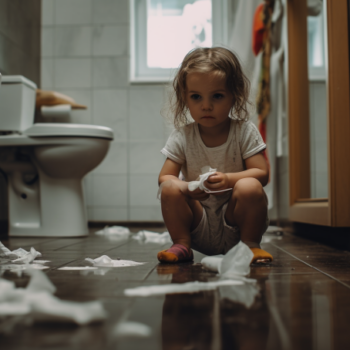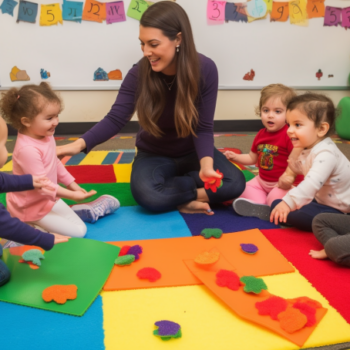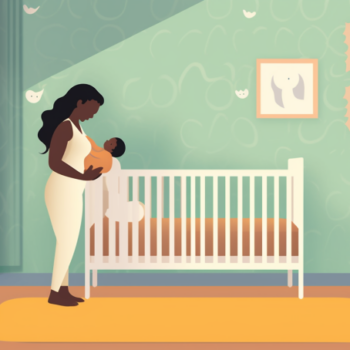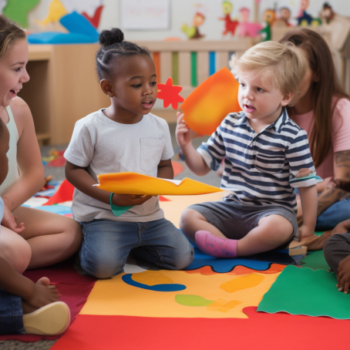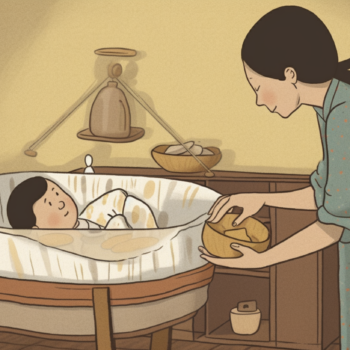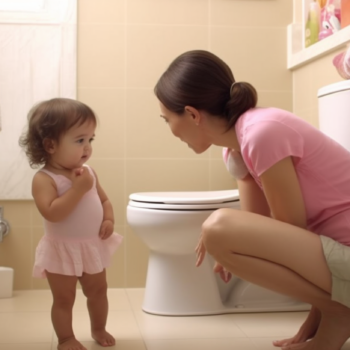Are you a breastfeeding mother wondering if you can sleep train your baby? The answer is yes, you can! Sleep training and breastfeeding can go hand in hand if done correctly. It's important to establish a feeding schedule and ensure your baby is getting enough milk during the day before starting sleep training. Gradual methods like the pick-up-put-down technique or the Ferber method can work well for breastfeeding moms. It may take longer to see results, but with consistency and patience, your baby will learn to self-soothe and sleep through the night while continuing to receive the benefits of breastfeeding. Remember, every baby is different, and it's important to listen to your instincts and consult with your healthcare provider before starting any sleep training method.
Author: Aveline FitzRoyale (Aveline FitzRoyale)
Expert Tips for Dealing with Potty Training Accidents Like a Pro
Potty training can be a stressful time for both parents and children. Accidents are inevitable, but it's important to handle them correctly to avoid setbacks. First, stay calm and reassure your child that accidents happen. Clean up the mess quickly and thoroughly to avoid lingering odors. Encourage your child to help with the clean-up process to reinforce the importance of using the potty. Consider using waterproof training pants or a mattress protector to avoid messes during sleep. And most importantly, be patient and consistent in your potty training approach. With time and perseverance, accidents will become less frequent and your child will be on their way to successful potty training.
10 Fun and Simple Alphabet Activities for Toddlers to Boost Learning.
Looking for some fun and easy alphabet activities to do with your toddler? Look no further! There are plenty of creative and engaging ways to introduce the alphabet to your little one. From making alphabet crafts to playing letter recognition games, these activities will help your child learn the ABCs in a fun and interactive way. In this blog post, we'll share some of our favorite alphabet activities for toddlers that are simple, inexpensive, and sure to be a hit with your little learner. So grab some supplies and get ready to have some letter-filled fun with your toddler!
How Often to Check on Your Baby During Sleep Training: A Comprehensive Guide
Sleep training is an essential process that helps babies learn how to sleep independently. However, it's natural for parents to worry about their little one's well-being during the process. One common question that arises is how often a baby should be checked on during sleep training. While there's no one-size-fits-all answer, experts suggest checking on your baby every 10-15 minutes to ensure they're safe and comfortable. It's important to remember that sleep training takes time and consistency, and frequent checks can disrupt the process. Trust in the process and give your baby the chance to learn and develop healthy sleep habits.
The Risks of Newborns Sleeping on Their Stomach: Safety Precautions and Guidelines
As a new parent, one of the most common questions you may have is whether it is safe for your newborn to sleep on their stomach. While stomach sleeping may seem comfortable for babies, it is not recommended due to the risk of sudden infant death syndrome (SIDS). The American Academy of Pediatrics recommends placing babies on their backs to sleep until they are at least one year old. This reduces the risk of SIDS by up to 50%. It is essential to ensure that your baby's sleep environment is safe, including using a firm mattress and avoiding loose bedding, soft toys, or other objects that could obstruct their breathing. Always consult with your pediatrician if you have any concerns about your baby's sleeping habits.
Discover the Advantages of Incorporating Alphabet Activities in Teaching
Teaching the alphabet through activities is a fun and engaging way to introduce children to the world of letters. Not only does it allow children to learn through hands-on experiences, but it also helps to develop their cognitive, language, and fine motor skills. By incorporating games, puzzles, and crafts, children are able to explore the alphabet in a way that keeps them motivated and excited. Furthermore, these activities encourage children to be creative and imaginative, leading to a deeper understanding and appreciation for language. Overall, teaching the alphabet through activities is an effective and enjoyable way to set children on the path to reading and writing success.
Discover the Various Approaches to Sleep Training for Your Baby
Sleep training is a process of teaching a baby to sleep through the night. There are different methods of sleep training that can be used to achieve this goal. The most popular methods include the Ferber method, the Weissbluth method, and the extinction method. The Ferber method involves gradually increasing the amount of time between check-ins. The Weissbluth method involves creating a consistent sleep schedule and following it every day. The extinction method involves letting the baby cry it out until they fall asleep. Each method has its own advantages and disadvantages, and it is important to choose the one that works best for both the baby and the parents. A good sleep training method can help to improve the quality of sleep for the entire family.
Supplementing Breastfeeding with Formula: The Pros and Cons Explained
Breastfeeding is the best way to provide a baby with all the nutrients they need for optimal growth and development. However, there are situations where supplementing with formula may be necessary or beneficial. This may include low milk supply, medical issues, or personal choice. It is important to discuss any concerns with a healthcare provider and ensure that the baby is getting enough nutrition from both breast milk and formula. A combination of breastfeeding and formula feeding can also allow for more flexibility and support for the mother. Regardless of the feeding method chosen, the most important thing is to provide the baby with the love and care they need to thrive.
Discovering Newborn Sleep Patterns: A Guide to How Often They Sleep
As a new parent, one of the most common questions you might have is how often should your newborn be sleeping. Newborns tend to sleep a lot, with an average of 16-17 hours per day. However, they typically wake up every few hours to eat and then go back to sleep. It's important to note that newborns have their own unique sleep patterns and may not sleep for long periods of time at night right away. As your baby grows and develops, their sleep patterns will change, and it's important to adjust your expectations accordingly. By understanding your newborn's sleep patterns and needs, you can help ensure that they are getting the rest they need to grow and thrive.
A Comprehensive Guide to Determine Your Child’s Potty Training Readiness
Potty training is an important milestone in a child's development, but it can be challenging for both the child and parent. It's important to know if your child is ready before starting the process. Some signs that your child may be ready include showing interest in the potty, being able to stay dry for a few hours, and being able to communicate their needs effectively. It's important to be patient and positive during the process, as every child is different and may take longer to master this skill. By following your child's cues and providing plenty of encouragement and support, you can help them successfully navigate this important stage in their development.


